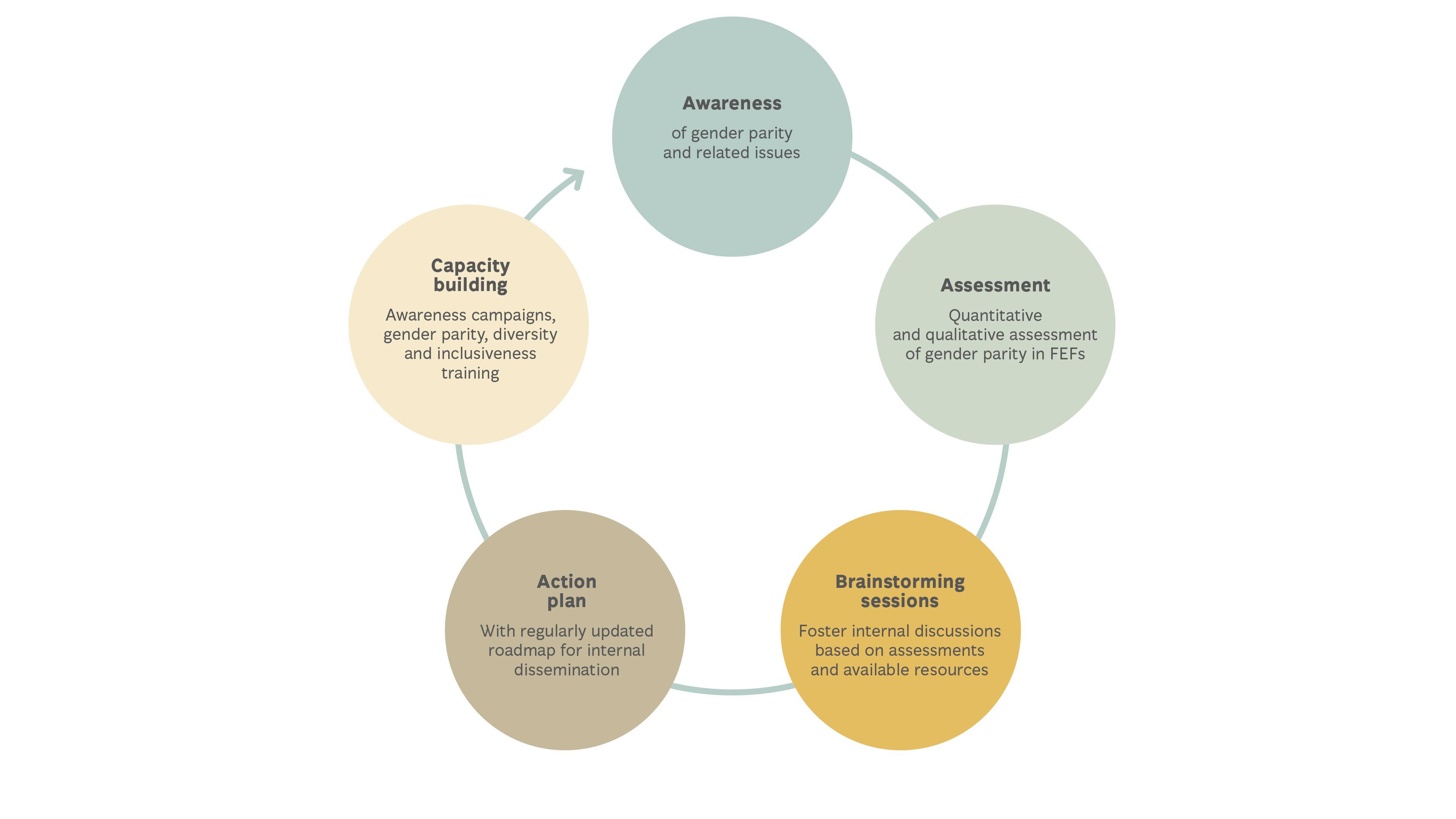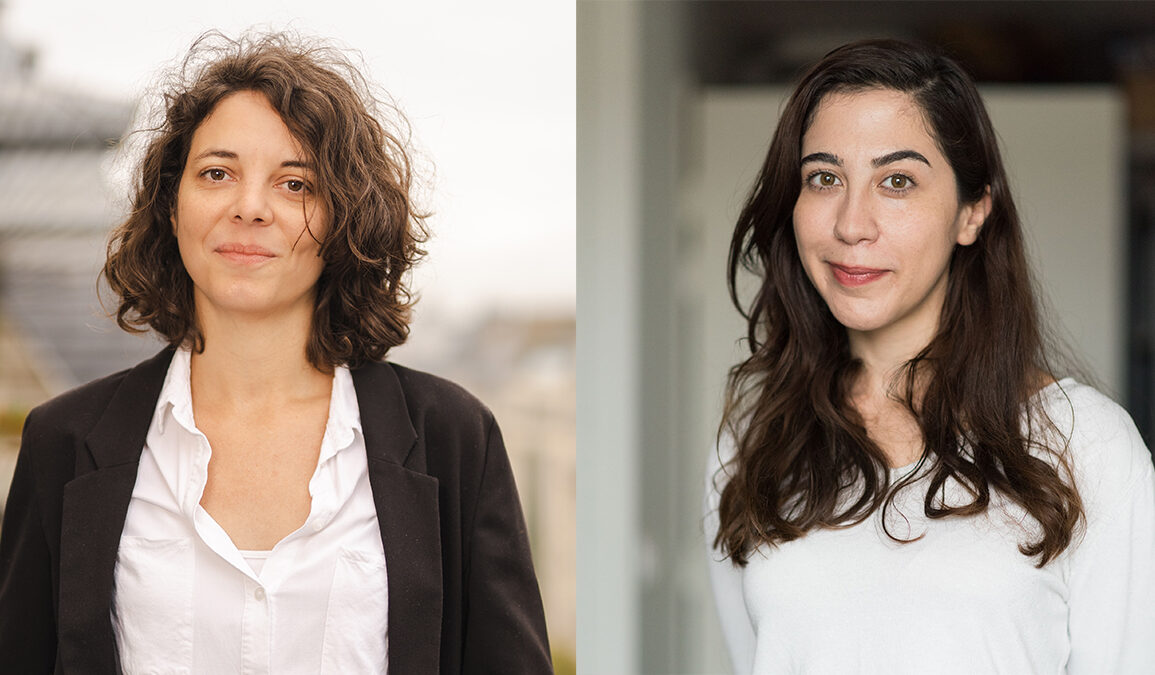Why did you write your study now?
Hazal Atay: Gender parity has been discussed for different domains and fields of activity in France, yet the philanthropic sector has largely remained outside of these conversations. Likewise, where several gender parity laws were enacted for certain political elections or for the governance of large companies, the philanthropic sector was virtually not affected by these laws. Moreover, gender parity in foundations and endowment funds were not studied previously or very marginally, and there was a gap in the literature on this matter.
This intrigued you?
Yes. We were intrigued by this lack of regulation and discussion regarding gender parity for and in the philanthropic sector and wanted to undertake a preliminary study to shed light on the current state of gender parity in the philanthropic sector in France, but also to invite further conversations and studies on this matter. To this aim, we collected data on boards’ gender composition and conducted 21 interviews with boards members and CEO’s of foundations.
We observe a slow progress over 20 years across public benefit foundations
Anne Cornilleau
What are the main findings of the study?
Anne Cornilleau: Women remain underrepresented in governance of foundations and endowment funds in France; they make up one third of the boards examined in this study. We observe a slow progress over 20 years across public benefit foundations; where 15% of the boards of directors achieved gender parity in 2001, this has increased to 29% in 2021. We noted that gender parity is more common in corporate foundations and across small-sized boards. What is interesting here is that corporate foundations are often created by companies for which gender quotas in boards are compulsory since the enactment of a 2011 French law. It is also important to emphasize that the size of the board is linked with the scope and financial means of foundations. One could thus posit that entities with the most expansive boards of directors tend to have high stakes in terms of power and personal status, which could exacerbate gender inequality.
You note a great imbalance in the foundations-sector in France in terms of gender parity. What is your analysis of the situation?
A.C.: The problem is actually twofold; on the one hand, we are confronted with the fact that women are underrepresented in the board of directors of foundations and endowment funds. On the other hand, even where there seems to be a gender equal representation, there may be an unequal division of tasks and responsibilities. Indeed, we found that women are less likely to preside as chairs of the boards, and more likely to be given the role of secretary.
H.A.: This hints at the existence of a glass ceiling for foundations and endowment funds in France; the philanthropic sector is very ‘feminized’, yet we see that women are not included in the governance of these structures. Moreover, these findings also suggest that inequalities are reproduced at different levels; even where women and men are equally represented, a gender-stereotyped division of labor persists and women are assigned roles with less decision-making power.
even where women and men are equally represented, a gender-stereotyped division of labor persists and women are assigned roles with less decision-making power.
Hazal Atay
This problem has many root causes, which include lack of awareness and discussions on gender parity, diversity and inclusion for and in the philanthropic sector as well as social inequalities that persist in French society.
Is gender parity more than numerically balanced representation on a board?
A.C.: Gender inequality is not merely about women’s numerical underrepresentation, nor is it just about men’s overrepresentation. We see that gender inequality is a phenomenon that is reproduced at different levels and it operates both vertically and horizontally. Women are not only restricted with a glass ceiling; they also face discrimination in the roles they assume or are assigned at a given level of activity. Moreover, gender inequality also has cultural and symbolic significance. As it is reproduced, it becomes part of the culture; sectors or roles from which women are excluded are increasingly becoming male sectors and roles.
Gender inequality also has cultural and symbolic significance.
Anne Cornilleau
Since the mode of operation and impact of gender inequalities are multidimensional, our approach to gender parity must also be multidimensional. In this regard, we underline in the report that gender parity is horizontal as much as it is vertical. Gender parity is therefore much more than a numerical balance, it is qualitative as well as quantitative. This was well attested during the interviews, where foundations demonstrated a cross-cutting approach to gender parity. They expressed that they see the challenge of gender parity linked to many other issues, that are both internal and external to foundations. For many of them, gender parity is also a matter of inclusiveness and diversity. They also see it integral to their work and advanced the opinion that foundations shall set and lead by example towards more gender equality, diversity, and inclusion.
What can foundations do to change?
H.A.: In the report, we propose some actionable steps that foundations can take to towards gender parity. It all starts with raising awareness regarding gender parity and related issues. In this context, foundations need to follow the developments and discussions about gender parity that are taking place in various sectors and in the world. They have to see themselves party to, not exempt from, these conversations. Awareness in values and principles are important, but it has to be followed by an assessment of the situation of gender parity in the foundation. To this aim, we particularly recommend collecting sex-disaggregated data to understand what’s at stake with gender parity in a given foundation. Such an assessment, however, only provides us with a diagnostic of the current situation. Foundations also need to organize brainstorming sessions to reflect on these assessments. These sessions can also be venues for discussing other issues related to parity, like diversity and inclusion, and can also be enlarged to include discussions among other foundations or within networks. It is ideal if foundations work on an action plan or a roadmap detailing their commitments and actions towards gender parity; it is only with such a concrete plan that we can carry the diagnostic account (the assessment) to a prescriptive account for progressive change. In implementing action plans, foundations may consider investing in establishing application processes promoting diversity within boards and capacity building by organizing awareness raising campaigns or trainings on gender parity, diversity and inclusion.
It is ideal if foundations work on an action plan or a roadmap.
Hazal Atay
The process towards gender parity needs to be an ongoing one, in which gender equality remains on the agenda and is tackled as new inequalities may emerge or jeopardize gender parity even when or after it is acquired.
Transformative action cycle toward gender parity in foundations and endowment funds

What role foundations can play in achieving gender parity?
H.A.: Gender parity stands for a societal and institutional ideal, and is therefore a matter of public interest. Throughout the interviews, executive members of foundations expressed that the philanthropic sector can set and lead by example to support a societal sea change towards gender inequities. For some of the interviewees, this was a matter of coherence; as foundations are dedicated to achieving public interest, they have to commit to gender equality. Indeed, foundations can play a leading role in bringing change towards gender equality.
Read the study: Gender Parity: Challenges, issues, and opportunities for foundations and endowment funds in France


